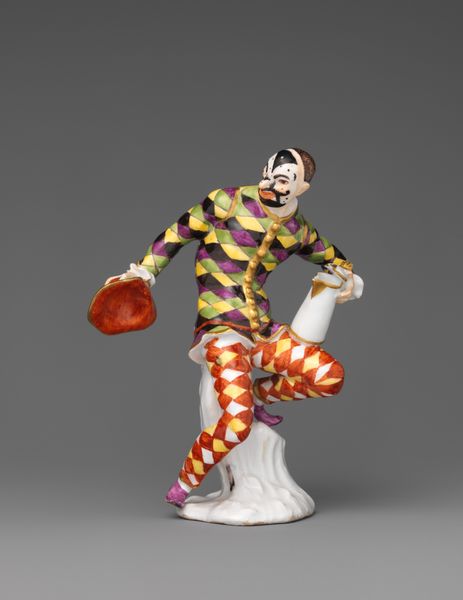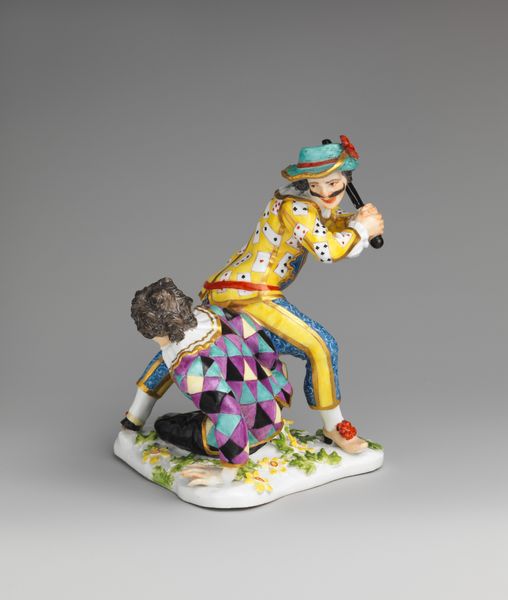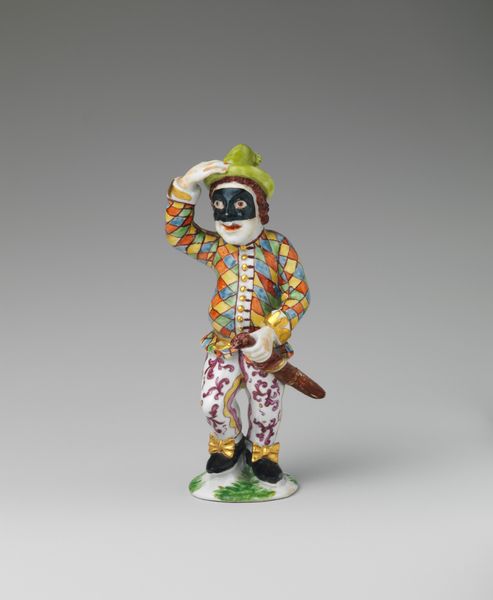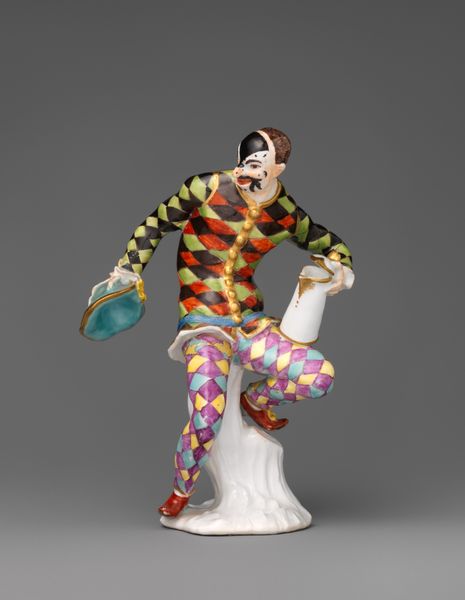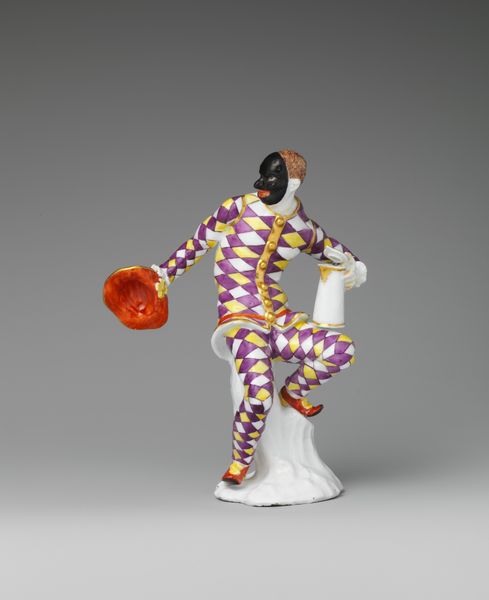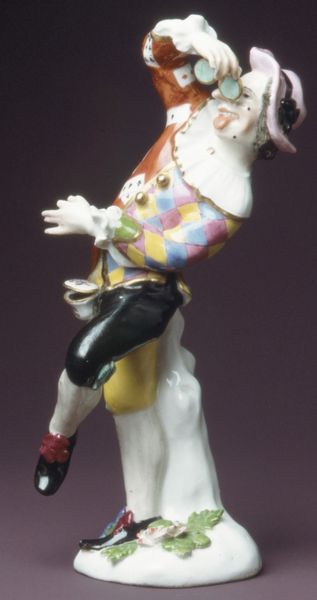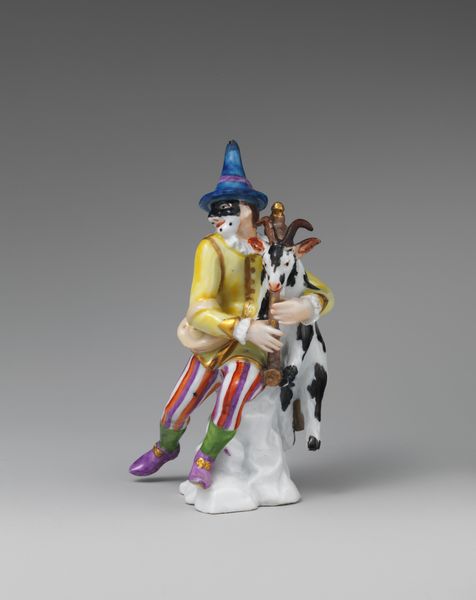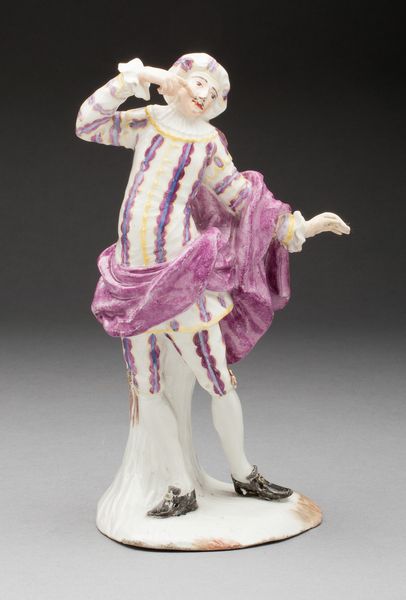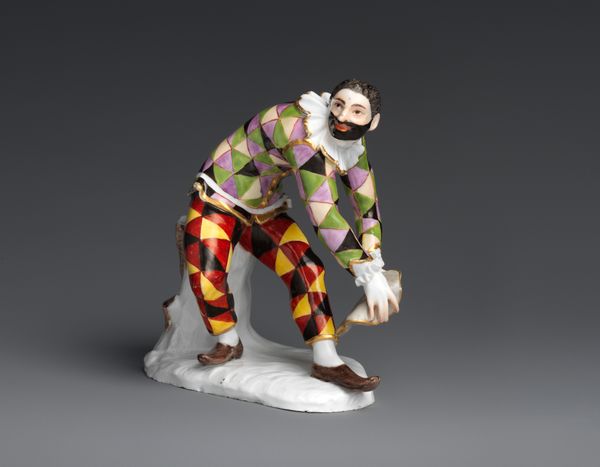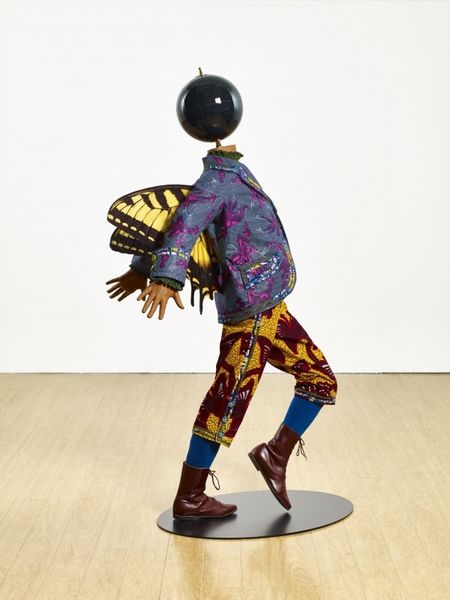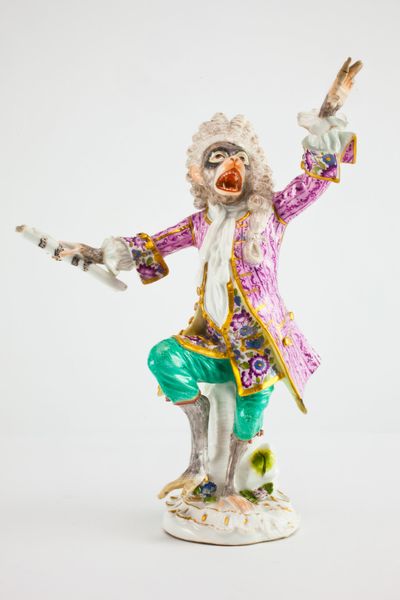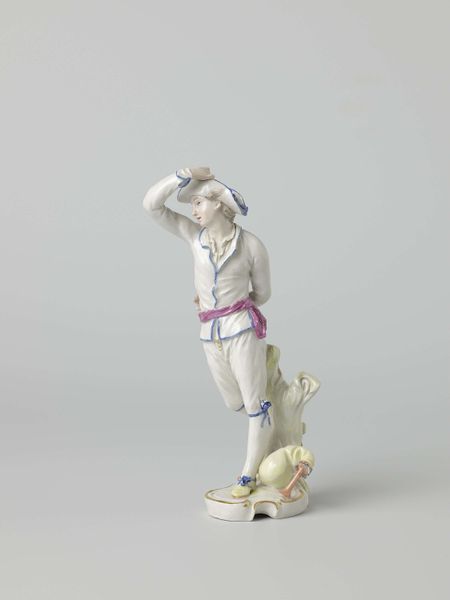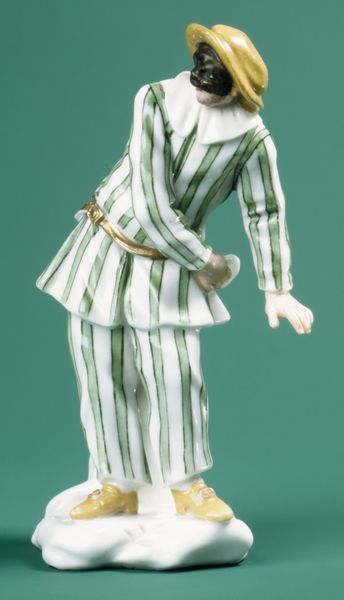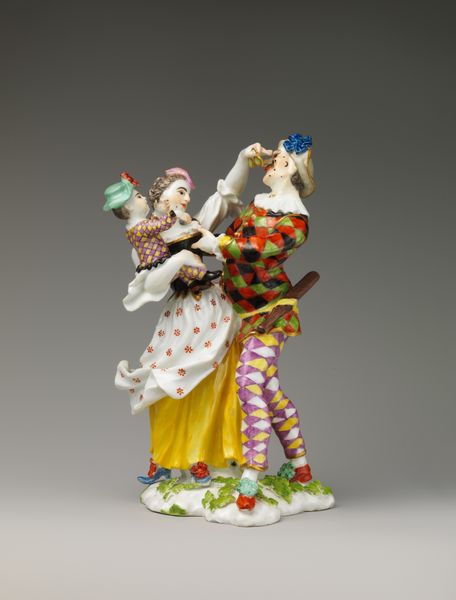
ceramic, sculpture
#
portrait
#
ceramic
#
figuration
#
sculpture
#
genre-painting
#
rococo
Dimensions: 6 1/4 x 5 x 2 1/2in. (15.9 x 12.7 x 6.4cm)
Copyright: Public Domain
Johann Joachim Kändler sculpted this porcelain Harlequin figurine in the 18th century, capturing a stock character known for wit and mischief. The Harlequin's mask conceals his identity, symbolizing the blurring of social boundaries, and the freedom to mock authority without consequence. His costume, adorned with vibrant, diamond-shaped patches, suggests a fragmented, ever-changing persona, reflecting the complexities of human nature. The jug he holds, a symbol of revelry and intoxication, hints at the blurring of the boundaries between rationality and ecstasy. This figure echoes motifs of earlier masked figures in commedia dell’arte, which are themselves descended from ancient pagan festivals. Like the Dionysian revelers of old, the Harlequin embodies a primal impulse toward chaos and liberation, a yearning for release from the constraints of polite society. These disruptive qualities speak to the collective human desire to subvert norms and to embrace the irrational, surfacing again and again, transformed, throughout history.
Comments
minneapolisinstituteofart about 2 years ago
⋮
The Commedia dell' Arte was a traveling improvisational comedy troupe originating in Italy around 1560. The masked characters probably have their roots in Venice's Carnival and became well known throughout Europe. Harlequin, usually portrayed with a red and black mask and diamond patterned clothing, was one of the best known of the group. J.J. Kändler began designing figurines of the stock characters at Meissen in the 1730s, further spreading their popularity through porcelain.
Join the conversation
Join millions of artists and users on Artera today and experience the ultimate creative platform.
